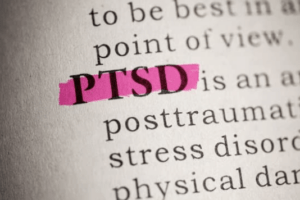
Can I Get VA Disability Benefits For Flattened Affect?
If you are a military veteran with flattened affect, you may be eligible for VA disability benefits. Flattened affect is a symptom of several medical conditions that may be service-connected.
If you suffer from this condition as a veteran, you may be eligible for disability benefits if your mental health condition results from your military service.
Flattened Affect and Service-Connection
Flattened affect causes the loss of ability to express emotions or react to events and circumstances that typically trigger an emotional response. Most people with flattened affect will still feel emotions but do not instinctively express those feelings like a person without the condition would.
People with flattened affect may speak in a monotone way, they may maintain a blank or neutral facial expression, and avoid eye contact.
Indicators of Flattened Affect can include:
- Little to no emotional expression on the face
- Little to no verbal or nonverbal emotional reaction to events or circumstances that would normally elicit a response
- Apathetic demeanor
- Monotone speaking voice
- Little to no eye contact
- Little to no changes in facial expression
Flattened affect is usually associated with an underlying disorder, most often one affecting the veterans mental health. Some primary conditions that cause flattened affect may be service-connected, meaning they arose from a specific event during the veteran’s service.
Primary conditions connected to Flattened Affect can be:
- PTSD
- Traumatic brain injury
- Depression
Call 1-888-373-4722 or complete a Free Case Evaluation form
VA Disability Ratings For Flattened Affect
Most ailments that cause flattened affect are mental health conditions which the VA will assign impairment ratings using certain criteria. The veterans impairment rating is critical because it determines their level of monthly compensation.
The rating U.S. Code of Federal Regulations adheres to for some mental health disorders are:
- 100% rating: “Total occupational and social impairment, due to such symptoms as: gross impairment in thought processes or communication; persistent delusions or hallucinations; grossly inappropriate behavior; persistent danger of hurting self or others; intermittent inability to perform activities of daily living (including maintenance of minimal personal hygiene); disorientation to time or place; memory loss for names of close relatives, own occupation, or own name.”
- 70% rating: “Occupational and social impairment, with deficiencies in most areas, such as work, school, family relations, judgment, thinking, or mood, due to such symptoms as: suicidal ideation; obsessional rituals which interfere with routine activities; speech intermittently illogical, obscure, or irrelevant; near-continuous panic or depression affecting the ability to function independently, appropriately and effectively; impaired impulse control (such as unprovoked irritability with periods of violence); spatial disorientation; neglect of personal appearance and hygiene; difficulty in adapting to stressful circumstances (including work or a work-like setting); inability to establish and maintain effective relationships.”
- 50% rating: “Occupational and social impairment with reduced reliability and productivity due to such symptoms as: flattened affect; circumstantial, circumlocutory, or stereotyped speech; panic attacks more than once a week; difficulty in understanding complex commands; impairment of short and long-term memory (e.g., retention of only highly learned material, forgetting to complete tasks); impaired judgment; impaired abstract thinking; disturbances of motivation and mood; difficulty in establishing and maintaining effective work and social relationships.”
- 30% rating: “Occupational and social impairment with occasional decrease in work efficiency and intermittent periods of inability to perform occupational tasks (although generally functioning satisfactorily, with routine behavior, self-care, and conversation normal), due to such symptoms as: depressed mood, anxiety, suspiciousness, panic attacks (weekly or less often), chronic sleep impairment, mild memory loss (such as forgetting names, directions, recent events).”
- 10% rating: “Occupational and social impairment due to mild or transient symptoms which decrease work efficiency and ability to perform occupational tasks only during periods of significant stress, or; symptoms controlled by continuous medication.”
- 0% rating: “A mental condition has been formally diagnosed, but symptoms are not severe enough either to interfere with occupational and social functioning or to require continuous medication.”
Call 1-888-373-4722 or complete a Free Case Evaluation form
Call 1-888-373-4722 or complete a Free Case Evaluation form
Get The Help You Deserve
If you’re a veteran suffering from Flattened Affect, you need the help of an expert VA Disability Advocate. An expert advocate can help you fight for VA disability benefits for a medical condition causing flattened affect and help you get the benefits you deserve. Click here to contact our team now or call us at 1-888-373-4722.
Read More Here:
- Types Of VA Disabilities
- VA Disability Compensation Rates
- What Is TDIU and How Can I Get It?
- SSDI For Veterans
- Can My Spouse Receive My VA Disability After I Die?
- The Easiest Way to a 100% VA Disability Rating
- VA Benefits For Spouses of 100% Disabled Veterans
Call 1-888-373-4722 or complete a Free Case Evaluation form







